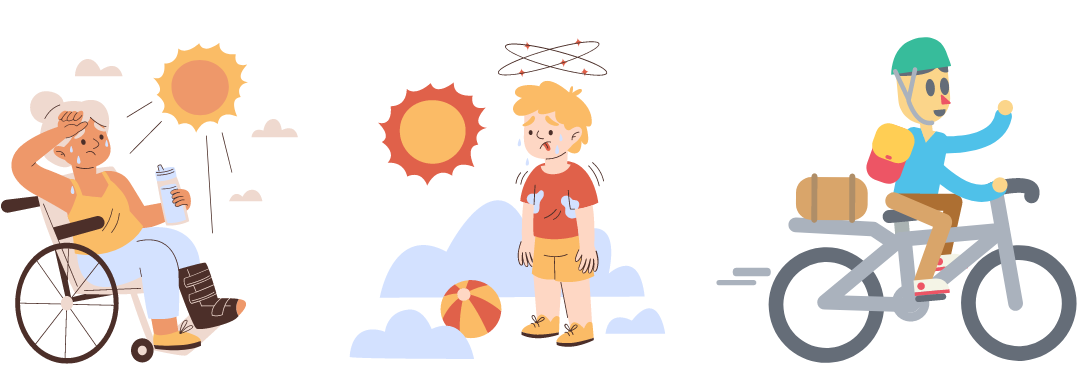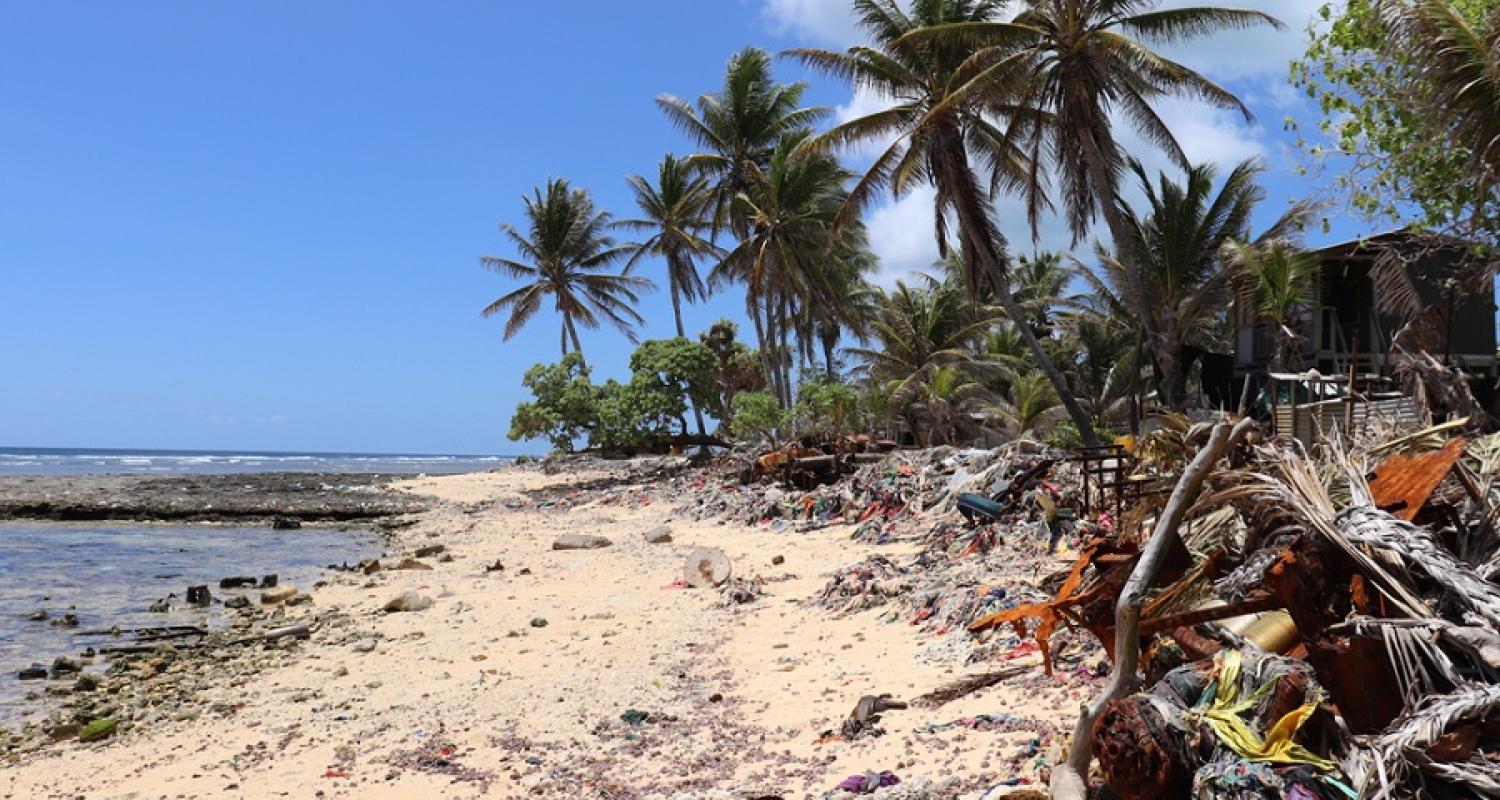Surviving the heat
Temperatures in parts of Southeast Asia have reached more than 40 degrees Celsius during the current heat wave.
Temperatures in these areas are exceeding their average daily temperature by more than 5 degrees Celsius for 5 consecutive days. Myanmar, Thailand, the Philippines and Vietnam have experienced extreme hot weather recently. Though not categorized as a heat wave, Indonesia has also seen consistent increases in temperature in several cities (Meteorology, Climatology, and Geophysics Agency of Indonesia).
These heat waves can lead to health and environmental problems.
Here's what you need to know.
- Heat waves are prolonged periods of abnormally hot weather, exacerbated by factors like global warming and the urban heat island effect.
-
They have severe impacts on health, including heat exhaustion, dehydration, and heatstroke, and environmental consequences, like drought, wildfires, and air pollution.
-
Vulnerable populations, such as the elderly, children, pregnant women (source: Lancet Journal), individuals with chronic illnesses, and outdoor workers, are at increased risk during heat waves.
-
Strategies for staying safe include staying hydrated, staying cool, dressing appropriately, and limiting outdoor activities.
-
Emergency preparedness measures involve knowing the signs of heat-related illnesses, having a plan, and preparing an emergency kit.

Heat waves are extended periods of abnormally hot weather, usually characterized by high temperatures, and often accompanied by high humidity. They can happen in different parts of the world and are becoming more frequent and intense due to climate change.
Heat waves can have severe impacts on both human health and the environment. High temperatures can lead to heat exhaustion, dehydration, and life-threatening heatstroke if not addressed promptly. Additionally, prolonged periods of hot weather can contribute to drought conditions, increase the risk of wildfires, and exacerbate air pollution levels.
Overall, heat waves highlight the urgent need for climate adaptation measures and underscore the importance of reducing greenhouse gas emissions to mitigate the impacts of climate change.
The effects of heat waves
Heat waves can lead to heat exhaustion, a condition characterized by heavy sweating, weakness, dizziness, nausea, and headache. If not addressed promptly, heat exhaustion can progress to heatstroke.
High temperatures increase the body's demand for water, leading to dehydration. Inadequate fluid intake can result in symptoms such as dry mouth, fatigue, and dark-coloured urine.
Heatstroke is a severe and life-threatening condition that occurs when the body's temperature regulation fails, leading to a dangerously high body temperature. Symptoms include confusion, rapid heartbeat, hot and dry skin, and unconsciousness. Heatstroke requires immediate medical attention and can be fatal if left untreated.
Vulnerable Populations 
During heat waves, vulnerable populations such as respiratory and cardiovascular diseases, diabetes mellitus, and kidney disease, require special attention and support. Elderly individuals, children, individuals with chronic illnesses, and outdoor workers are particularly at risk.
- Elderly people may experience age-related physiological changes, chronic health conditions, and social factors that exacerbate their vulnerability.
- Children have a smaller body size, higher metabolic rate, and limited ability to regulate body temperature. Individuals with chronic illnesses may have underlying health conditions or take medications that can impair thermoregulation.
- Outdoor workers are at increased risk due to prolonged exposure to high temperatures and physical exertion.
Protecting vulnerable populations during heat waves requires the efforts of public health agencies, community organizations, healthcare providers, employers, and individuals.
- Stay Hydrated

-
Drink plenty of water throughout the day, even if you don't feel thirsty. Aim to consume at least 8 to 10 glasses of water daily, and more if you're engaging in physical activity or sweating heavily. And always have your water bottle with you when you are going out.
-
Avoid alcoholic beverages, caffeinated drinks, and sugary beverages, as they can increase dehydration. Choose water, electrolyte-rich sports drinks, or coconut water to replenish lost fluids and electrolytes.
-
Monitor your urine colour: Pale yellow urine indicates adequate hydration, while darker urine may signal dehydration. If your urine is dark, increase your fluid intake.
-
- Stay Cool

-
Seek out cool environments, buildings or community centres with good ventilation or air circulation room, especially during the hottest parts of the day.
-
Use fans to lower indoor temperatures and promote air circulation. Take cool showers or baths or use damp towels to cool your skin.
-
Close blinds, curtains, or shades during the day to block out direct sunlight and keep indoor spaces cooler. Consider using reflective window coatings or insulated curtains to reduce heat gain.
-
- Dress Appropriately

-
Wear lightweight, loose-fitting clothing made from breathable fabrics such as cotton or linen. Light-coloured clothing reflects sunlight and helps keep your body cool.
-
Choose moisture-wicking clothing designed for outdoor activities, which helps to draw sweat away from your skin and promote evaporation, keeping you cooler and more comfortable.
-
Protect your head and face with a wide-brimmed hat or cap to shade your face from direct sunlight. Sunglasses with UV protection can also help protect your eyes from harmful UV rays.
-
- Limit Outdoor Activities

-
Minimize outdoor activities, especially strenuous exercise and physical labour, during the hottest parts of the day, typically between 10 a.m. and 4 p.m. If you must be outdoors, schedule activities for early morning or late evening when temperatures are cooler.
-
Take frequent breaks in shaded or cool areas to rest and cool down. Listen to your body and pace yourself to avoid overheating and exhaustion.
-
Use sunscreen with a high Sun Protection Factor (SPF) and reapply regularly, especially if you'll be spending extended periods outdoors. Sunburn can increase your body's temperature and increase the risk of heat-related illness.
-
If you notice a significant deterioration in your health during a heat wave, seek medical help immediately in the closest healthcare facility from you.
-
Tips for staying safe during heat waves
By following these tips, you can help protect yourself and others from the adverse effects of heat waves and stay safe and comfortable during periods of extreme heat.
Emergency preparedness during heat waves
Prepare an Emergency Kit. Assemble an emergency kit with essential supplies to help you cope with heat waves and potential power outages. Your emergency kit should include:
-
Ample water: Store at least one gallon of water per person per day for drinking and hygiene needs. Consider storing additional water for pets.
-
Non-perishable food: Stock up on nutritious, easy-to-prepare foods that require little to no cooking, such as canned goods, granola bars, dried fruits, and nuts.
-
First aid supplies: Include items such as bandages, antiseptic wipes, sunscreen, insect repellent, and any necessary medications like individual medication for people with chronic diseases who take daily medications as they have a greater risk of complications and death during heat waves.
-
Portable fans or battery-operated fans: Use fans to improve air circulation and help cool indoor spaces during power outages.
-
Flashlights or battery-powered lanterns: Ensure you have adequate lighting in case of power failures or nighttime emergencies.
-
Personal hygiene items: Pack toiletries, hygiene products, and sanitation supplies to maintain cleanliness and comfort during prolonged periods without power or running water.
-
Emergency contacts: Keep a list of important phone numbers, including local emergency services, healthcare providers, and utility companies, in your emergency kit.
By being prepared and proactive, you can minimize the risks associated with heat waves and ensure the safety and well-being of yourself and your loved ones during extreme heat events.
Climate change threatens public health, especially vulnerable groups. Our teams help those affected. Support our mission.

